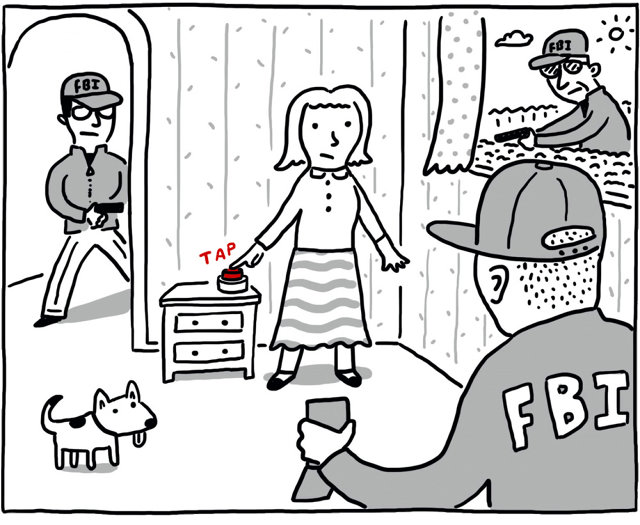
We’ve all seen the Staples Easy Button–a marketing schtick which imagines one button could solve any problem you had.
In the case of Staples, that button was just a metaphor for buying more ink and paper at their store. But now, The Button Corporation wants to make that magic product a reality. They call it bttn ($100). And its idea is to connect any mix of complicated Internet of Things tasks into a single press.
So what’s that mean in a practical sense? It means the bttn could be tapped for almost purposes limited mostly by your imagination: A child might slam on it to send a text to her parents when she arrives home from school, a diner might tap the button to get a refill of cheesesticks at TGI Fridays, a senior could tap the button to turn off the living room lights, turn down their Nest thermostat, and arm their security system before bed. Basically, if it’s connected to the internet, it can be controlled by this button.
In reality, the button is a pretty simple device. It’s a single button, connected to the internet through either a mobile data chip (like LTE) or Wi-Fi. And it’s wireless, promising to run off of two AA batteries for an impressive year–though frankly, if it manages half of that longevity, it would still be tough to complain.
All of the complicated programming–that Internet of Things juggling–is handled by the existing service IFTTT, an acronym for “If This Then That.” It’s a platform that allows you to easily build cause and effect relationships to your connected devices.

The bttn is nothing more than a physical extension of IFTTT. It’s a universal trigger for any domino effect of commands and services you could want to map to a single button press. But it’s impossible to imagine a much simpler user interface to control the Internet of Things. And it leads me to wonder if the mythical easy button really will have its day in the sun. Even Google’s smartwatch platform, Android Wear, has been experimenting with how a single blue button on your wrist could evolve for various contexts.
But part of its simplicity is that its really built to handle no more than a single task. Will we love the one-button interface as much as we imagined? Or will we discover that one wonderful button just begets the need for another button and another button–that one button can never be enough to add real convenience to our complicated lives?
(429)





